An Eddy Current-Based Structural Health Monitoring Technique for Tracking Bolt Cracking
Abstract
:1. Introduction
2. Design and Simulation Analysis of Eddy Current Sensing Film
2.1. The Design of the Sensing Film with One-Dimensional Eddy Current Coil Array
2.2. Finite Element Simulation Model
2.3. Quantitative Monitoring of the Bolt Cracking
2.4. Design and Verification of the Sensing Film with Two-Dimensional Coil Array
3. Experimental Verification
4. Conclusions
- (1)
- The one-dimensional circumferential array eddy current sensing film can identify the crack angle and the crack propagation on the bolt.
- (2)
- For multi-lap bolted joints, a two-dimensional array sensing film can be used to effectively identify the axial location of the crack on the bolt, in addition to the crack angle and the crack propagation.
- (3)
- The effects of conductivity and permeability on the detection results of ferromagnetic materials during eddy current testing have been deeply investigated. Both eddy current effect and magnetic flux leakage affect the variation of the induced voltage caused by the bolt cracking. Magnetic flux leakage plays a major role at the early stage of the bolt cracking, while eddy current effect does as the crack continuously propagates.
- (4)
- The exciting frequency was considered as 100 kHz in the simulation and 500 kHz in the experiment. However, the same varying trend of induced voltage with the increase of the crack depth can be obtained in the range 100 kHz to 1 MHz.
- (5)
- In order to ensure the reliability and durability of the sensing film in engineering applications, as shown in Figure 14, the flexible sensor film can be coated with a wear-resistant layer of SiO2 and Ta2O3 by electron beam physical vapor deposition and bonded to the inner surface of the sleeve, which is used for the bolted joints together with the monitored structure.
Author Contributions
Funding
Conflicts of Interest
References
- Guo, H.; Mao, K.; Liu, Y.; Liang, G. Experimental study on fatigue performance of Q460 and Q690 steel bolted connections. Thin-Walled Struct. 2019, 138, 243–251. [Google Scholar] [CrossRef]
- Wanhill, R.; Grooteman, F.; Oldersma, A. Validation of F-16 Wing Attachment Fitting bolts. Eng. Fail. Anal. 2013, 35, 16–24. [Google Scholar] [CrossRef]
- Findlay, S.; Harrison, N. Why aircraft fail. Mater. Today 2002, 5, 18–25. [Google Scholar] [CrossRef]
- Lee, H.-C.; Choi, J.-M.; Lee, B.; Kim, T.-G. Failure analysis of stress corrosion cracking in aircraft bolts. Eng. Fail. Anal. 2007, 14, 209–217. [Google Scholar] [CrossRef]
- Qing, X.; Li, W.; Wang, Y.; Sun, H. Piezoelectric Transducer-Based Structural Health Monitoring for Aircraft Applications. Sensors 2019, 19, 545. [Google Scholar] [CrossRef] [PubMed]
- Argatov, I.; Butcher, E.A. On the separation of internal and boundary damage in slender bars using longitudinal vibration frequencies and equivalent linearization of damaged bolted joint response. J. Sound Vib. 2011, 330, 3245–3256. [Google Scholar] [CrossRef]
- Hoang, T.D.; Herbelot, C.; Imad, A. Rupture and damage mechanism analysis of a bolted assembly using coupling techniques between A.E. and D.I.C. Eng. Struct. 2010, 32, 2793–2803. [Google Scholar] [CrossRef]
- Huo, L.; Wang, F.; Li, H.; Song, G. A fractal contact theory based model for bolted connection looseness monitoring using piezoceramic transducers. Smart Mater. Struct. 2017, 26, 104010. [Google Scholar] [CrossRef]
- Qiu, L.; Yuan, S.-F.; Chang, F.-K.; Bao, Q.; Mei, H. On-line updating Gaussian mixture model for aircraft wing spar damage evaluation under time-varying boundary condition. Smart Mater. Struct. 2014, 23, 125001. [Google Scholar] [CrossRef]
- Kim, Y.; Lim, H.J.; Sohn, H. Nonlinear ultrasonic modulation based failure warning for aluminum plates subject to fatigue loading. Int. J. Fatigue 2018, 114, 130–137. [Google Scholar] [CrossRef]
- Jung, H.K.; Jo, H.; Park, G.; Mascarenas, D.D.L.; Farrar, C.R. Relative baseline features for impedance-based structural health monitoring. J. Intell. Mater. Syst. Struct. 2014, 25, 2294–2304. [Google Scholar] [CrossRef]
- Huo, L.; Chen, D.; Liang, Y.; Li, H.; Feng, X.; Song, G. Impedance based bolt pre-load monitoring using piezoceramic smart washer. Smart Mater. Struct. 2017, 26, 057004. [Google Scholar] [CrossRef]
- Roach, D. Real time crack detection using mountable comparative vacuum monitoring sensors. Smart Struct. Syst. 2009, 5, 317–328. [Google Scholar] [CrossRef]
- Sun, Y.; Wang, W.; Li, B.; Liu, M. Investigation on behavior of crack penetration/deflection at interfaces in intelligent coating system. Appl. Math. Mech. 2015, 36, 465–474. [Google Scholar] [CrossRef]
- Xu, C.; Wu, G.; Du, F.; Zhu, W.; Mahdavi, S.H. A Modified Time Reversal Method for Guided Wave Based Bolt Loosening Monitoring in a Lap Joint. J. Nondestruct. Eval. 2019, 38, 85. [Google Scholar] [CrossRef]
- He, K.; Zhu, W. Detecting Loosening of Bolted Connections in a Pipeline Using Changes in Natural Frequencies. J. Vib. Acoust. 2014, 136, 034503. [Google Scholar] [CrossRef]
- Qiu, Z.; Hong, L.; Yao, Z.; Yang, J.; Zhang, R. Early prediction of fracturing failure for bolted joints based on enhanced metal magnetic memory. Insight Non-Destr. Test. Cond. Monit. 2019, 61, 603–607. [Google Scholar] [CrossRef]
- Goldfine, N.; Zilberstein, V.; Washabaugh, A.; Schlicker, D.; Shay, I. Eddy Current Sensor Networks for Aircraft Fatigue Monitoring. Mater. Eval. 2003, 61, 852–859. [Google Scholar]
- Rakow, A.; Chang, F.-K. A structural health monitoring fastener for tracking fatigue crack growth in bolted metallic joints. Struct. Health Monit. 2011, 11, 253–267. [Google Scholar] [CrossRef]
- Sun, H.; Wang, T.; Liu, Q.; Qing, X. A novel eddy current array sensing film for quantitatively monitoring hole-edge crack growth in bolted joints. Smart Mater. Struct. 2018, 28, 015018. [Google Scholar] [CrossRef]
- Sun, H.; Wang, T.; Liu, Q.; Wang, Y.; Qing, X. A two-dimensional eddy current array–based sensing film for estimating failure modes and tracking damage growth of bolted joints. Struct. Health Monit. 2019, 1475921719843062. [Google Scholar] [CrossRef]
- Liu, Q.; Sun, H.; Wang, T.; Qing, X. On-Site Health Monitoring of Composite Bolted Joint Using Built-In Distributed Eddy Current Sensor Network. Materials 2019, 12, 2785. [Google Scholar] [CrossRef] [PubMed] [Green Version]
- Campbell, G.S.; Lahey, R. A survey of serious aircraft accidents involving fatigue cracking. Int. J. Fatigue 1984, 6, 25–30. [Google Scholar] [CrossRef]
- Shi, Y.; Zhang, C.; Li, R.; Cai, M.; Jia, G. Theory and Application of Magnetic Flux Leakage Pipeline Detection. Sensors 2015, 15, 31036–31055. [Google Scholar] [CrossRef] [PubMed]
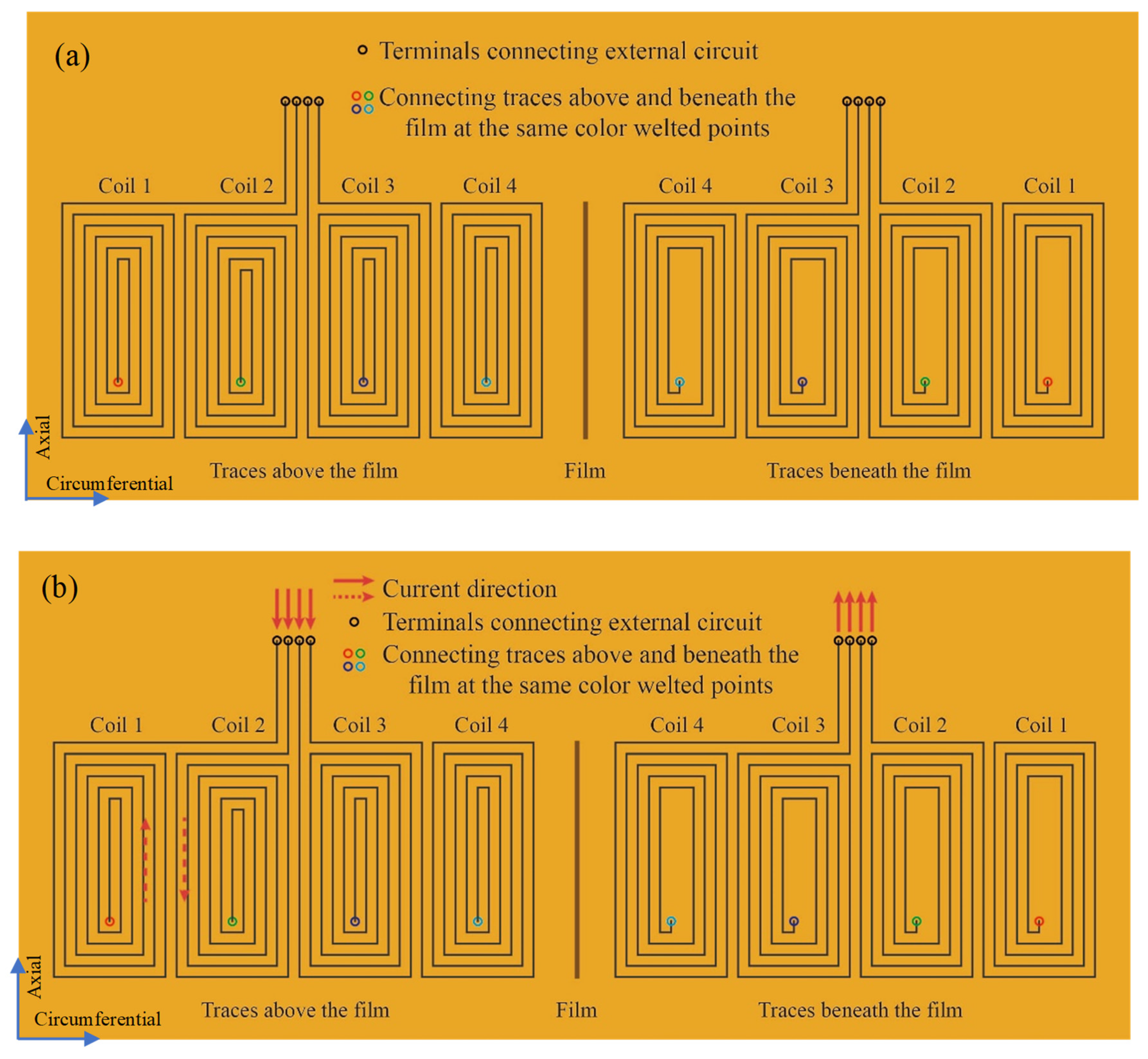
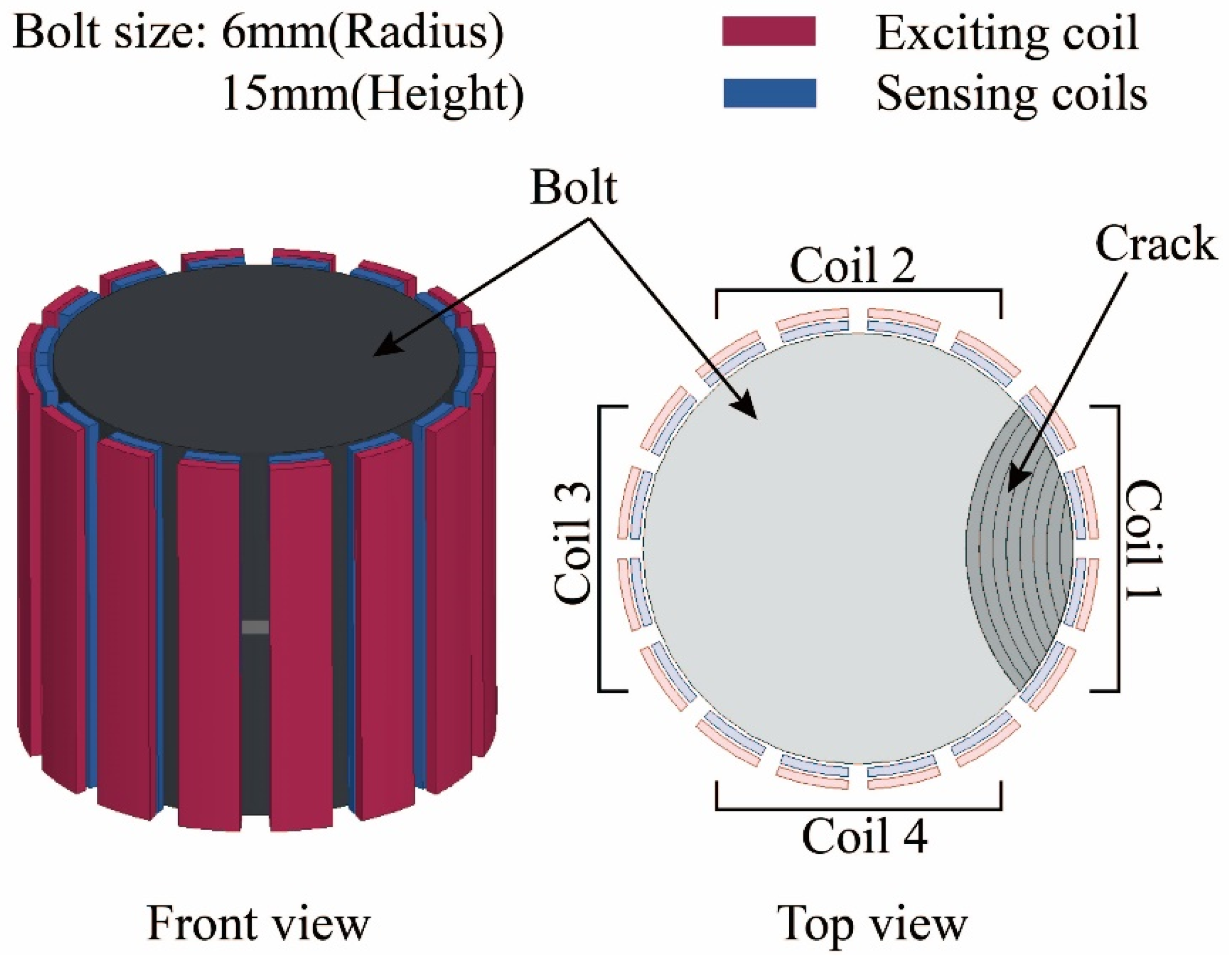
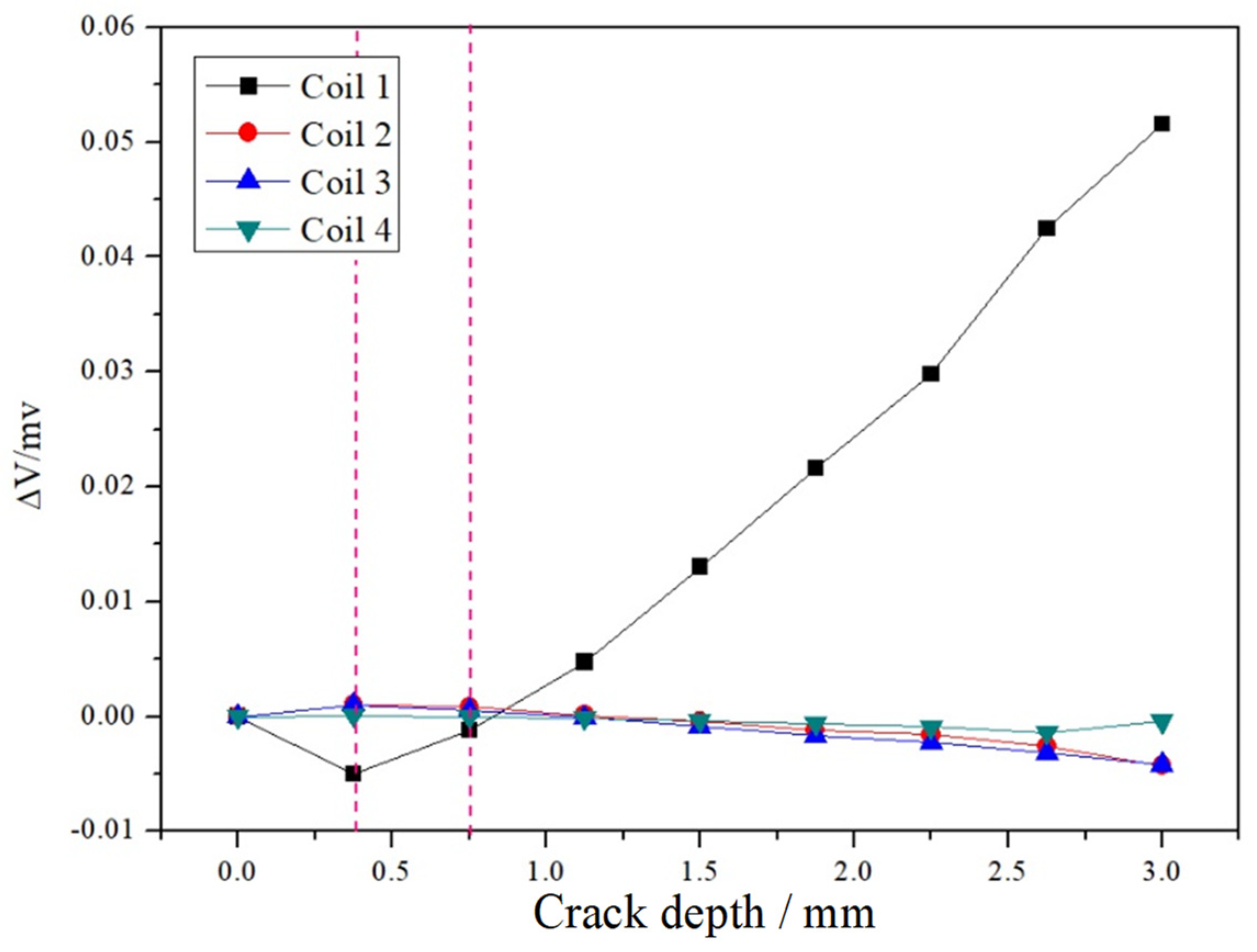
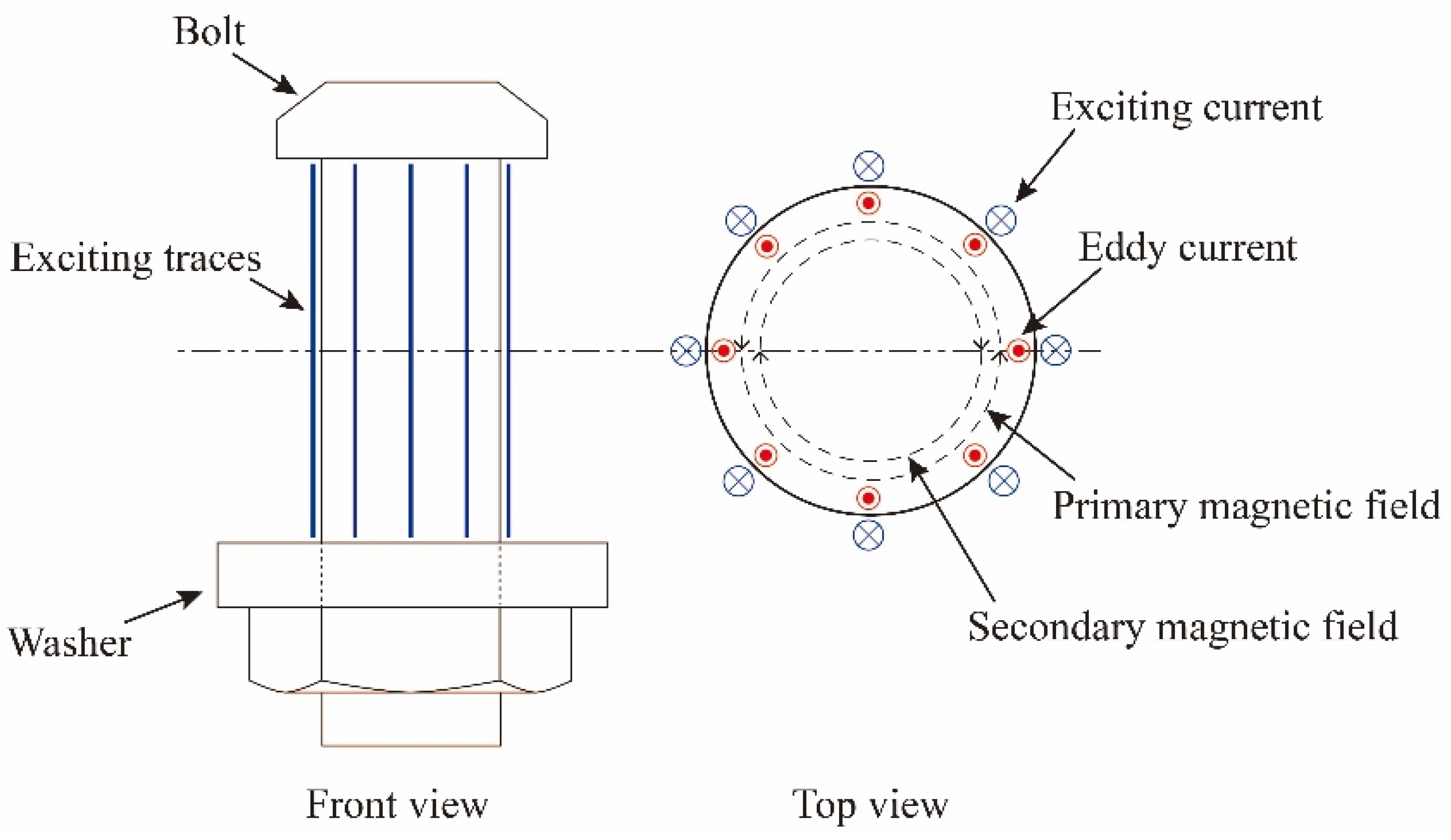



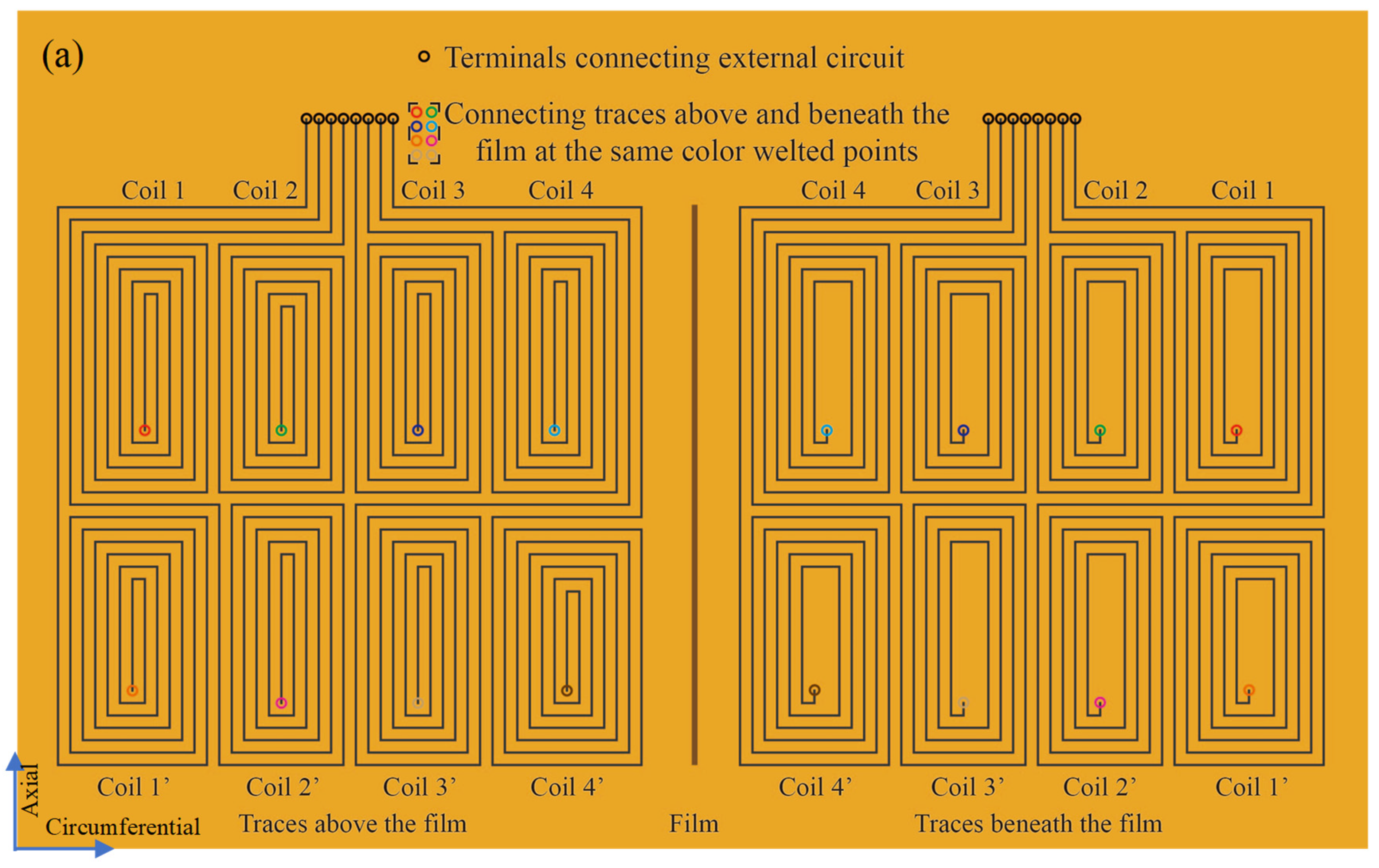
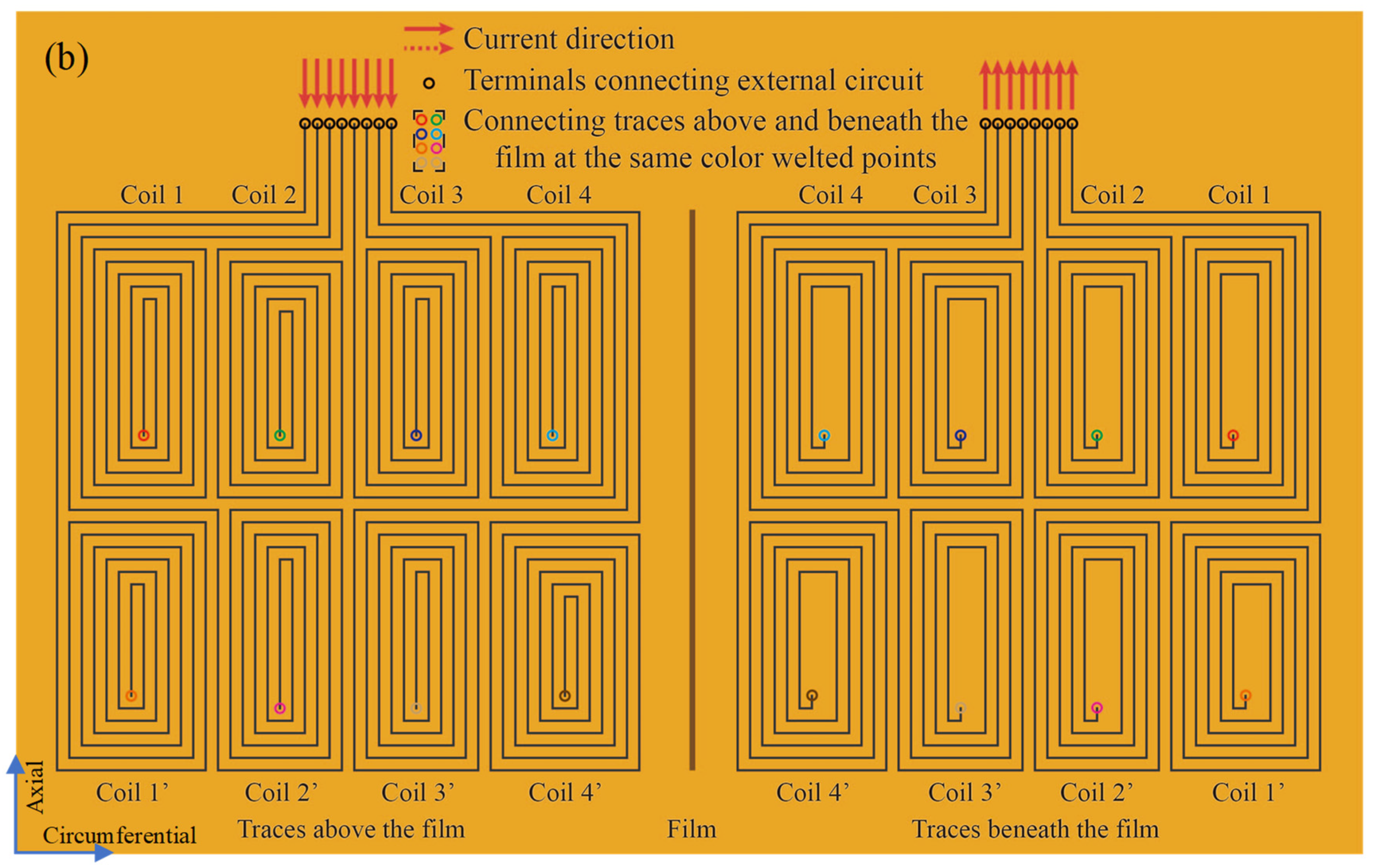



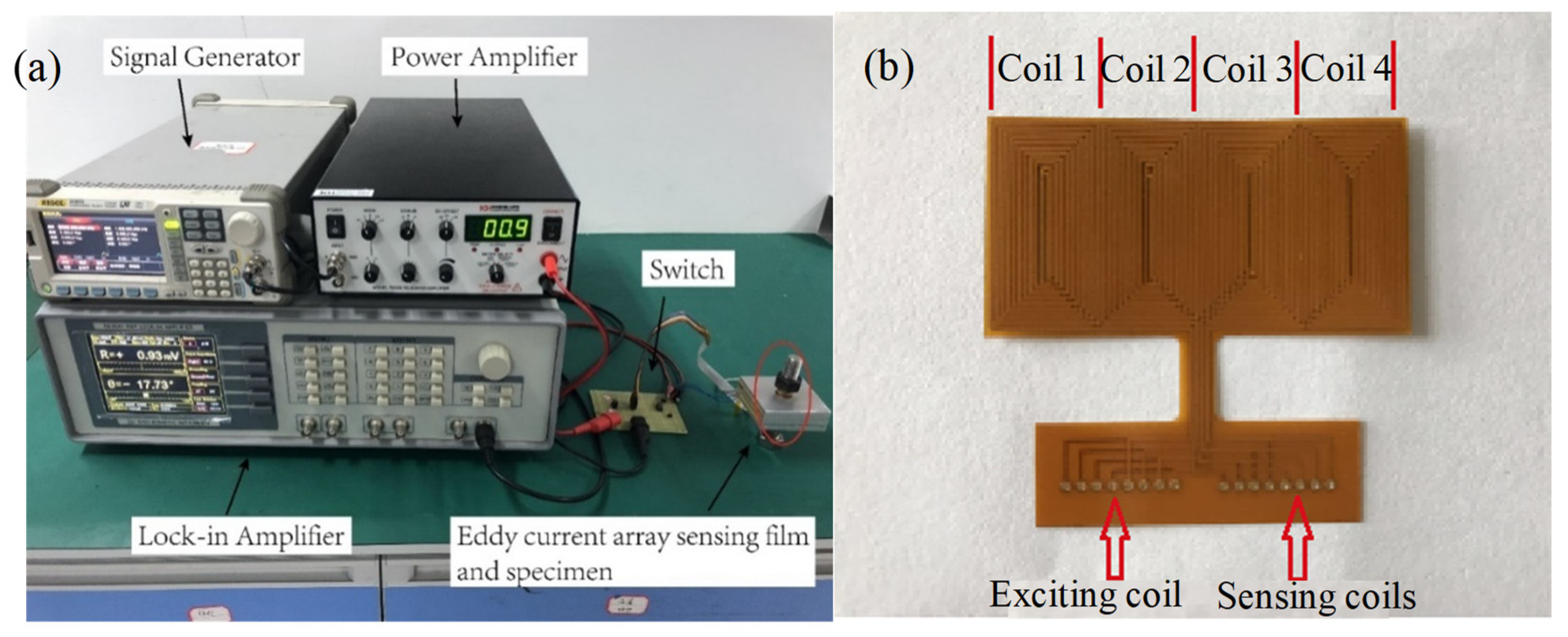
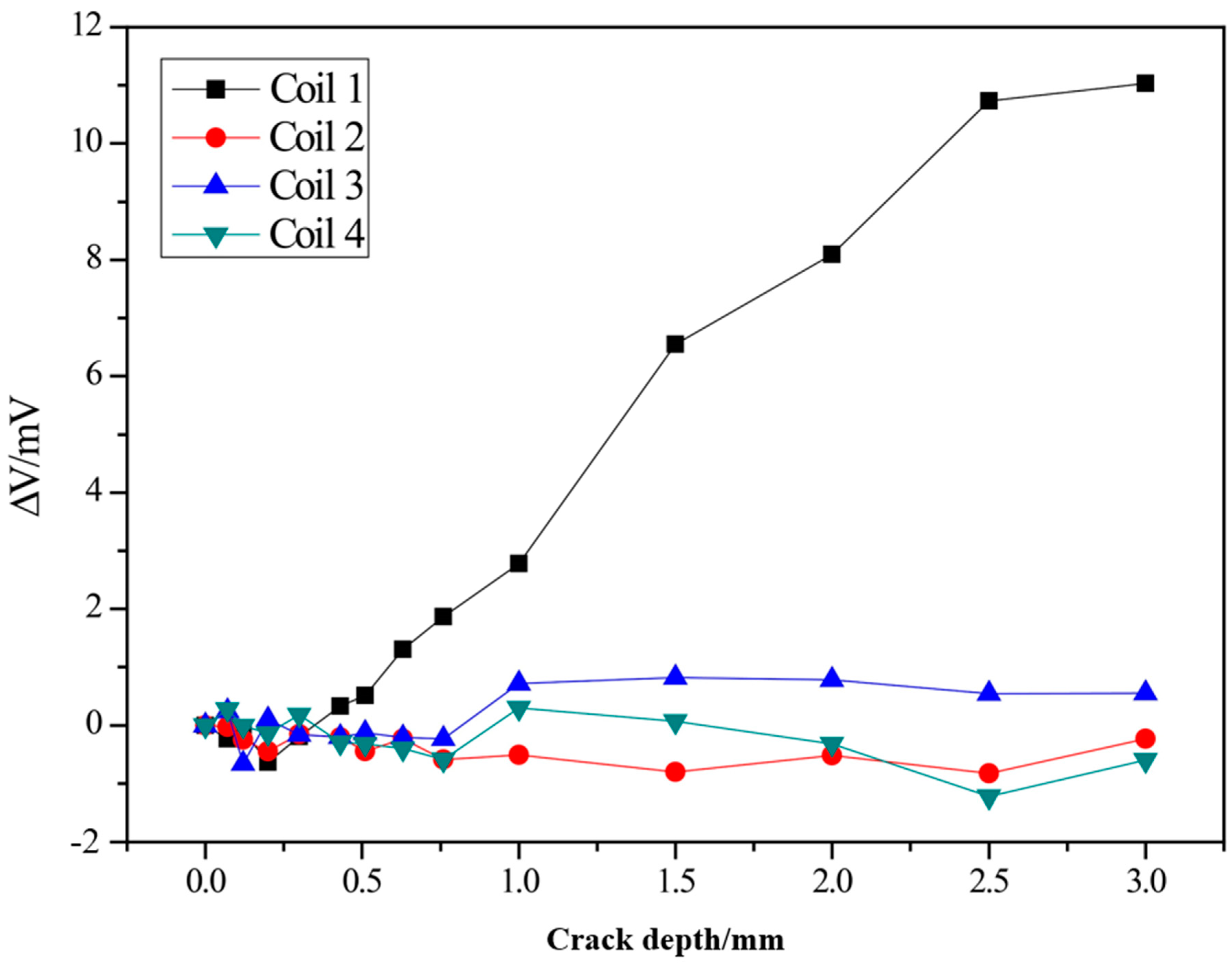
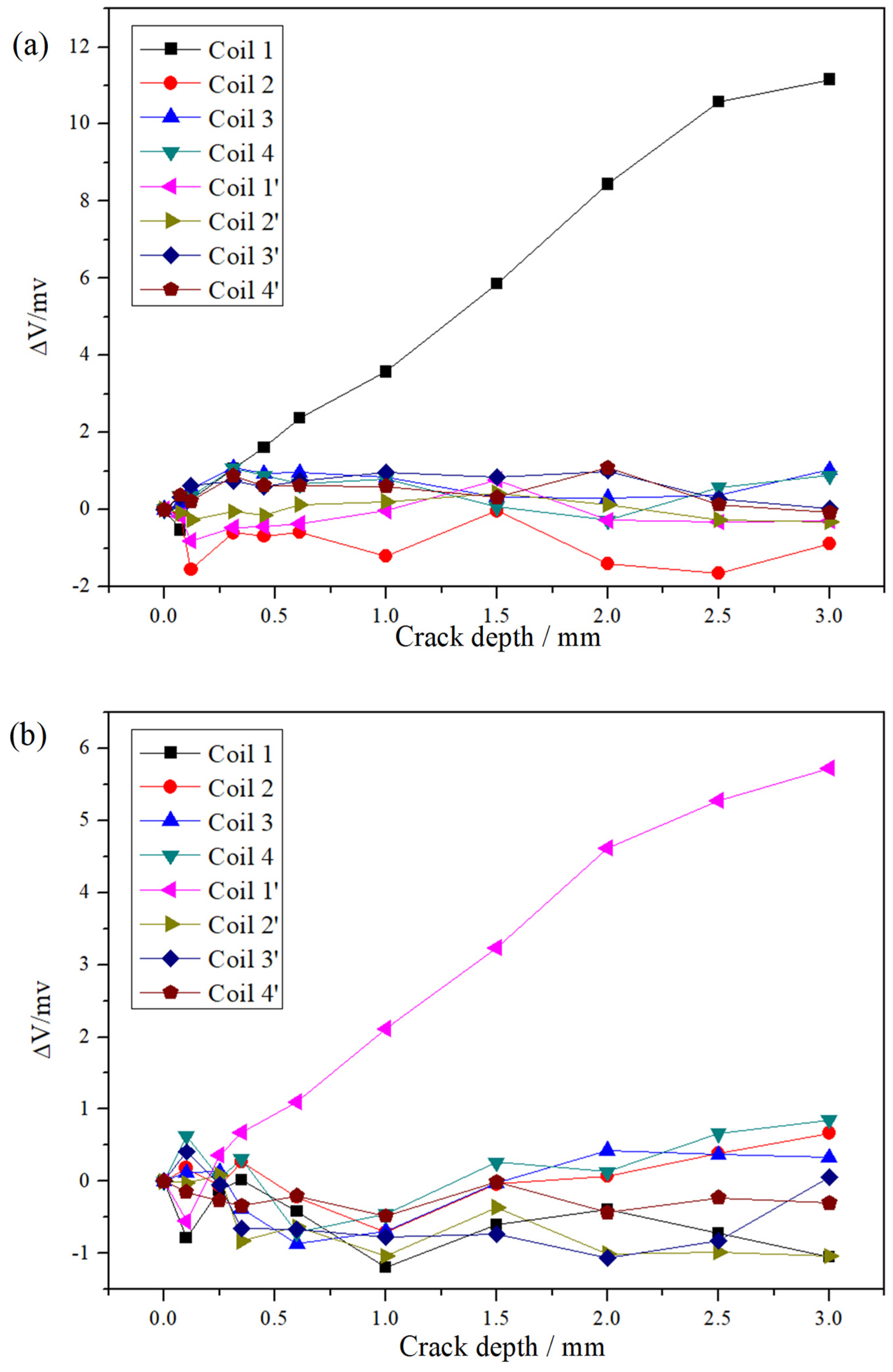

Publisher’s Note: MDPI stays neutral with regard to jurisdictional claims in published maps and institutional affiliations. |
© 2020 by the authors. Licensee MDPI, Basel, Switzerland. This article is an open access article distributed under the terms and conditions of the Creative Commons Attribution (CC BY) license (http://creativecommons.org/licenses/by/4.0/).
Share and Cite
Sun, H.; Wang, T.; Lin, D.; Wang, Y.; Qing, X. An Eddy Current-Based Structural Health Monitoring Technique for Tracking Bolt Cracking. Sensors 2020, 20, 6843. https://doi.org/10.3390/s20236843
Sun H, Wang T, Lin D, Wang Y, Qing X. An Eddy Current-Based Structural Health Monitoring Technique for Tracking Bolt Cracking. Sensors. 2020; 20(23):6843. https://doi.org/10.3390/s20236843
Chicago/Turabian StyleSun, Hu, Tao Wang, Dawei Lin, Yishou Wang, and Xinlin Qing. 2020. "An Eddy Current-Based Structural Health Monitoring Technique for Tracking Bolt Cracking" Sensors 20, no. 23: 6843. https://doi.org/10.3390/s20236843




